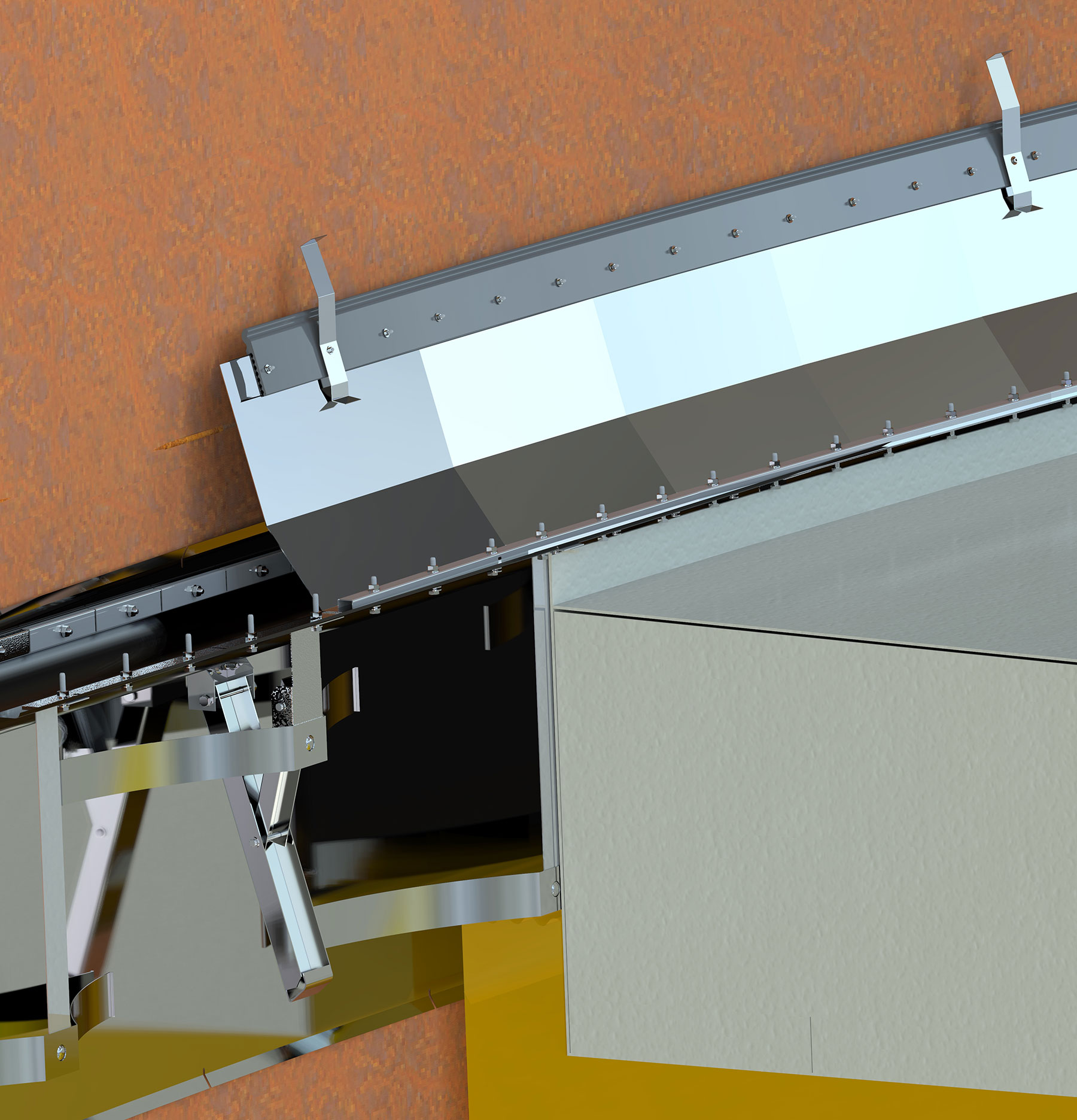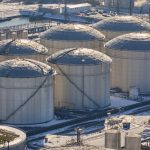In this series of seal design White papers, we will discus the various aspects of tank seal design. We believe that by sharing our knowledge we will contribute to improving the overall knowledge of these safety critical products. This will prevent safety incidents such as rim-fires and corresponding escalations. This way we aim to contribute, not only to an immediate emission reduction as well as preventing future pollution and injuries caused by these major incidents. THe images and texts shown in these whitepapers are intended to serve as learnings for prevention of future incidents and are by no means intended to discredit any supplier. The issues mentioned in the papers are universal and not limited to one supplier. This paper introduces the main concepts and links to papers with specific topics. This will allow easier reading and navigating to useful content.
GENERAL
All floating roofs have an annular rim space between the tank shell and the floating roof This permits smooth travel of the roof within the tank and prevents the roof from getting stuck in the tank. Rim seals are used to seal the annular space, primarily to reduce the emission and evaporative loss from the stored product and to maintain the product integrity by reducing the amount of (rain) water that can enter the tank. A good rim seal also helps to center the roof in the tank.
Rim seals need to be designed to accommodate harsh conditions, such as tank shell weld irregularities, dents and, to a certain extent, out-of-roundness of the tank shell.
The seal system may consist of one or two separate seals. The first, called the primary seal, is mounted in the annular space, and is normally in contact with the product. The secondary seal is located above the primary sea! to further reduce the evaporative loss and water ingress.
Four types of primary seals are normally used:
- the mechanical metal shoe plate type seal
- the Liquid mounted seal (liquid-, gas- or foam-filled fabric seal)
- the Liquid mounted spring seal
- the vapour-mounted seal (flexible wiper seal)
The first two seal types have been generally used on floating roofs for about 50 years. The Liquid mounted spring seal is a newer type, that entered production in the early 1990’s . The vapour-mounted seal is also a relatively new development and was introduced around 1985. Foam-filled and vapour-mounted seals are not considered to be suitable for use with riveted tanks.
GENERAL DESIGN ASPECTS
The primary and (rim-mounted) secondary seals should be designed to allow for the maximum inwards and outward movements of the floating roof structure in relation to the roundness of the tank shell. Future settlement of the tank foundation, which may influence the out-of-roundness, should be considered in the light of the service period of the tank,
In the design phase for a new seal the following items specific tank data have to be taken into consideration These items will have to be taken into consideration regardless of the choice for seal design:
- Dimensional aspects, such as Rim-gap, Rim-type, Out of roundness and local variations
- Existing seal configuration
- Stored product
- Material selection
For an existing tank, the maximum and the minimum tank diameters need to be measured, and the rim space requirement calculated in relation to the diameter of the floating roof.
DIMENSIONAL ASPECTS
The rim-gap, combined with the out of roundness of the tank determines the basic dimensions of the seal. A scissor seal for instance can, as a standard, bridge rim-gaps of up to 14†without any modification. Variations of +/- 4†can be bridged as well. It is important that the seal is designed for the measured rim-gap. Both rim-gap as well as out-of-roundness have to be determined. The effects of these dimensional deviations have to be superimposed on the existing rim gap to get an idea of maximum and minimum rim-gap in the tank and the seal needs to be designed accordingly. This approach will make sure that the designed seal is always tight.
It is important to superimpose the influence
EXISTING SEAL CONFIGURATION.
The existing seal configuration will not be a measure for the effectivity of the new seal, but
determines the ease with which the seal can be installed. Especially tube seals and certain types of pantograph seals need items to be welded to the tank shell, such as supports and pivots. The new seal will have to function without interference of the old seal parts that often remain in place.
STORED PRODUCT
The stored product is also of importance for the long term functioning of the seal involved. Especially aromatic hydrocarbons as well as alcohols, such as MTBE require their own material selection. Also the viscosity of the product is of importance. Very heavy, waxy hydrocarbons will require an other approach than the lighter, more volatile products.
MATERIAL SELECTION
One of the most important aspects of seal selection is the material selection. A seal will consist of 3 major groups of materials.
- Metallic parts, such as shoe plates or compression plates
- Vapour barrier material
- Lipprofiles
METALLIC PARTS
Metallic parts need to be carefully selected to suit the intended use. When a material is subjected to wear, such as shoe plates in a scissor seal It is not advisable to use galvanized steel. With a number of movements the galvanized layer will be worn off and a unprotected shoe plate remains. For spring materials, as for instance the tensioners in the scissor shoes it is important to select a spring material. SS301 is in this case the right choice, combining excellent product resistance with good mechanical properties. SS304 will be less suitable for this application.
VAPOUR BARRIERS
The primary function of a vapor barrier is to prevent vapor from emitting into the air. Dependent on the seal type it also has the secondary function, to prevent rim-fires. Selecting material for a vapor barrier is therefore a matter of finding the right balance between economical aspects, resistance against stored product and other influences, such as UV resistance, fire retardant properties and long term durability. The following materials have been used widely for this purpose:
For tanks with up to 50% aromatics NBR is the most suitable material for the vapour barrier. We have less good experience with PU for lip profile and vapourbarrier. PFTE and VITON have superior characteristics and chemical properties. PTFE is however somewhat more fragile and prone to cracking. It is therefore important to look at the mechanical strength of a seal material next to the chemical characteristics
LIP PROFILE MATERIAL
Lip profiles are used as a seal between the tank shell and the reminder of the seal. Because of the movement of the lip against the tank shell and product residues that remain present on the tank shell it is also important to select the right material for the lip profile. The lip profile or wiper tip as it is also called needs to have the following characteristics:
- It needs to be compatible with the stored medium in liquid form
- It needs to be UV resistant
- It needs to be wear resistant
A good lip profile is made of a solid, extruded material. Many suppliers experiment with composite materials, that aim to combine the chemical resistance of one material with the mechanical strength of another material. Due to wearing and dynamics the bonding between the 2 materials will fail in many cases, resulting in a failing seal system. It will always be better to use one single homogenous material and derive the mechanical strength from a stainless steel skid plate in cases were highly resistant materials have to be used. Lip proflies made of felt have not seen a long service life.
More details on specific primary seals, secondary seals and installation are presented in separate articles
Seal materials
Seal Experiments



